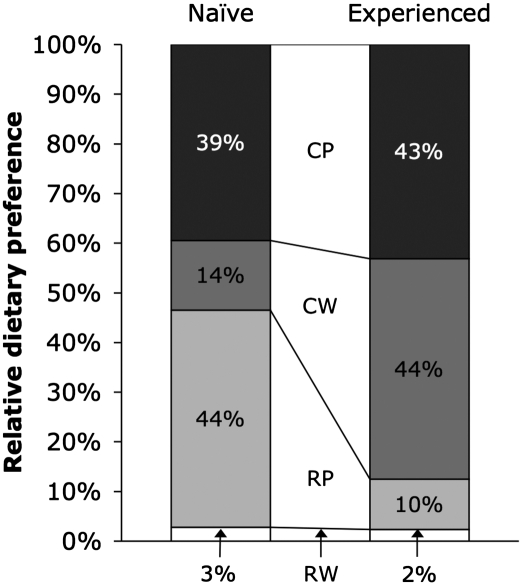Fig. 2.
Food preferences on tuber diets. Relative preferences among mice (n = 17) in the naïve (before exposure to any tuber diet) and experienced (after exposure to all tuber diets) conditions for organic sweet potato (I. batatas) served raw and whole (RW), raw and pounded (RP), cooked and whole (CW), and cooked and pounded (CP). Values shown reflect composite data from the two metrics of preference used in this study: first bite (diet consumed first given concurrent presentation of all diets) and total intake (grams consumed in 3 h corrected for desiccation). The composite value for a given diet is calculated as the average of the percentage of first bites and the percentage of total intake attributable to that diet. Naïve mice strongly preferred pounded tuber treatments (composite value χ2; cooking: P = 0.489, pounding: P < 0.001), whereas experienced mice strongly preferred cooked tuber treatments (composite value χ2; cooking: P < 0.001, pounding: P = 0.519).

